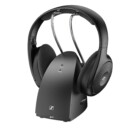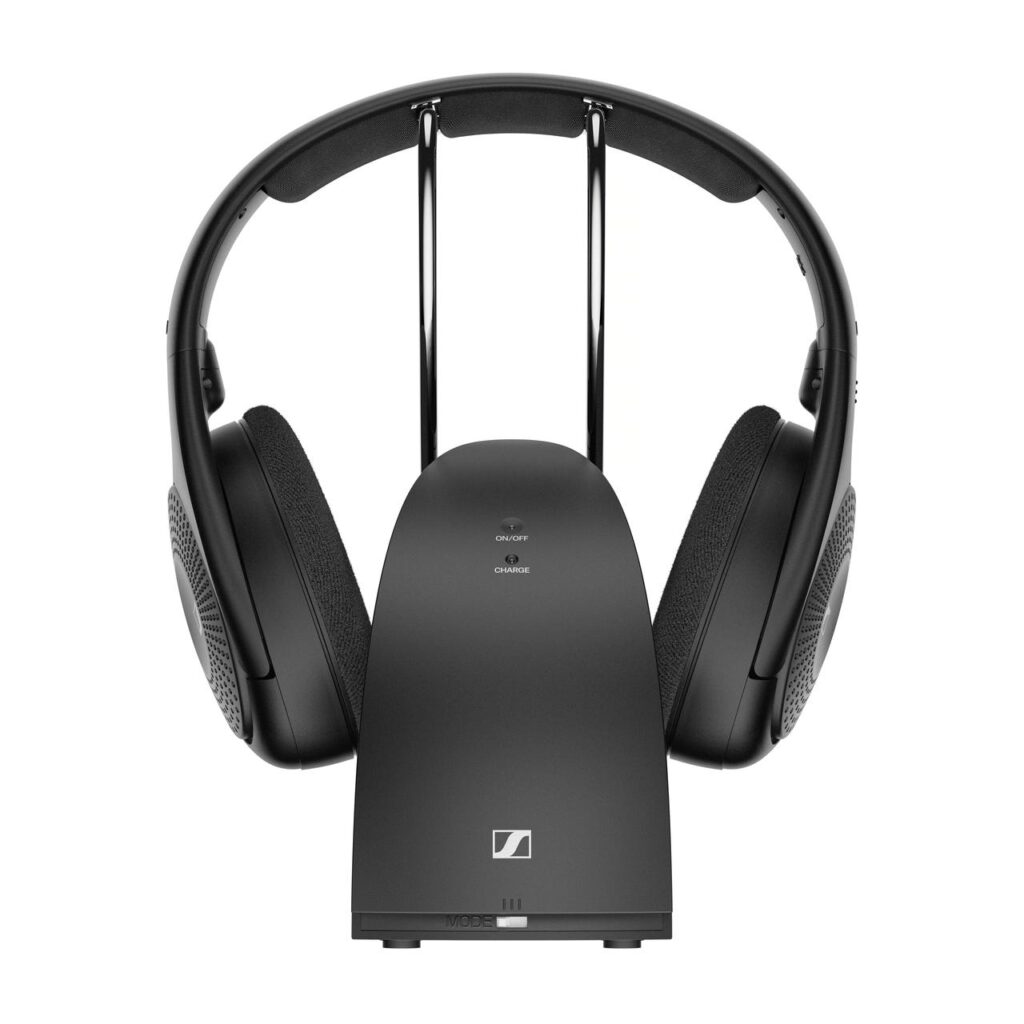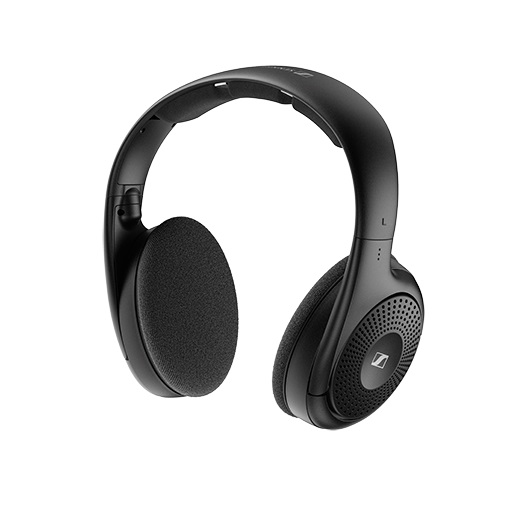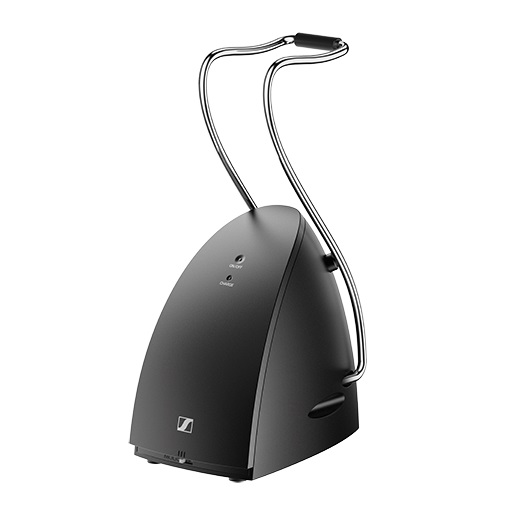
Sennheiser RS 120-W – Hardware Review
It’s been a while since we tried Sennheiser’s Flex 5000, which was a great piece of hardware to help people suffering from partial hearing loss enjoy their entertainment experiences once again. We loved linking our favorite pair of headphones or earphones to the transmitter, and after that, it was smooth sailing. Now, we have a device that also offers a few of these features, the RS 120-W, which is a transmitter and headphones combo with a few preprogrammed audio profiles. One of these profiles also puts spoken dialogue in the foreground, making sure you don’t miss a single word of the new House of the Dragon episodes.
Design
The RS 120-W reminds us a lot of those old-school headphones stands with the metal parts clearly visible. You’ll get a fairly modest package here, with a simple base and a fairly classy-looking pair of headphones. Both parts of the package don’t come with too many bells and whistles, as you’ll just see the logo depicted on both parts, and a few LED lights to show you the chosen audio profile, the power status, and if the headset is charging. Less is more here, and because of this, the device will fit any interior type. The only standout feature here is the metal frame on which the headphones rest, which is very similar to early wireless headsets. We found the overall combo had certain retro vibes.
Comfort
As a whole, the RS 120-W is a very comfortable device. Even though this is not an over-ear design, there’s ample padding in the headband and the ear cups. You can adjust the headband as well, and the grip isn’t too tight either. The soft velour finish of the ear cups also guarantees that longer sessions are still very comfortable and pleasant. The headphones are also extremely light, which is also a plus. Other than that, there is not that much to mention when it comes to the overall comfort features of the actual headphones.
We did have a few remarks about the overall design of this product, however. The batteries need to be inserted into the left ear cup, and we did find that the mechanism that keeps the padding in place for the left ear cup felt a bit flimsy. This was only a minor issue, but sometimes we struggled to click the padding back on. Other than that, the base felt a bit wonky because it was perhaps too light and the switch to switch between audio profiles was placed at a very awkward spot. If we wanted to switch profiles, we actually had to lift up the base, and with the switch being so tiny, it was more than often also a struggle not accidentally pressing the switch too far (towards another profile).
Specs
- Supra-aural / On-ear
- Open design
- Frequency range: 22 -19,500 Hz
- Impedance: 24 Ohm
- Sound pressure level: 100 dB
- Driver size: 30 mm
- Velour ear pads
- Transmitting station connections: RCA and 3.5 mm stereo jack, mains connection
- Battery life: Up to 20 hours
- 60 meter range through digital transmission (Bluetooth LE Audio Wireless, not Bluetooth Classic compatible)
- LE Audio Broadcast mode allows simultaneous use of multiple headphones on one transmitter
- Playback profiles: Speech, music, or neutral
- Weight headphones (including batteries): 215 g
Overview
The RS 120-W is marketed as a pair of headphones for TV. Of course, as the device works with a 3.5mm jack (via an adapter, and the device also has an RCA connection), you can basically hook it up to any device that has a 3.5mm port. After plugging in the base and putting in batteries in the actual headphones, we were good to go. We simply had to select the audio profile that suited our needs, and after that, we had a very enjoyable experience. Keep in mind that the batteries in the headphones are regular rechargeable AAA batteries. You’ll have to work with rechargeable batteries, as the base is able to recharge the batteries when you place your pair of headphones on the base. The base has a LED light that is supposed to light up then, so if this does not happen after using the headphones, you may need to adjust the headphones on the base making sure it’s in the correct position. Perhaps it was better to have an internal battery, making it so you didn’t have to mess around with opening the ear pad if you wish to replace your batteries. Then again, if your internal battery is busted, you would also lose your device.
The audio quality is amazing. You’ll hear a distinct difference when swapping between the different audio profiles, and it’s just fun being able to switch to a setting perfect for music, to immediately go back to a profile that is pleasant for watching movies. Of course, the neutral profile is somewhere in-between, and this might be ideal if you are not experiencing any hearing loss and want a reasonable balance between the voices popping out and the actual music and bass. The headphones also have a separate volume control wheel on the right side. This is also quite convenient.
Conclusion
Sennheiser’s RS 120-W is a fairly affordable companion for an array of different audio experiences, but we felt that we got more enjoyment out of the Flex 5000. The RS 120-W gives you access to a great and very lightweight pair of headphones, but we disliked the fact that we had to recharge the device with regular batteries and the overall setup was a bit clunkier than we liked. Nonetheless, the audio quality was amazing, and we did love the different preprogrammed audio profiles. We do hope that future models will also receive the option to connect it via an optical port. All in all, this is a decent and affordable device.
Sennheiser RS 120-W - Hardware Review,








No Comments